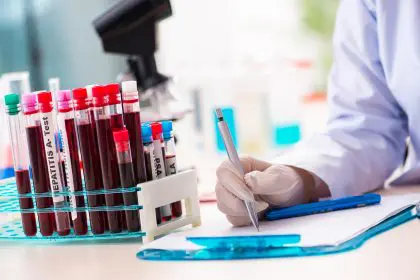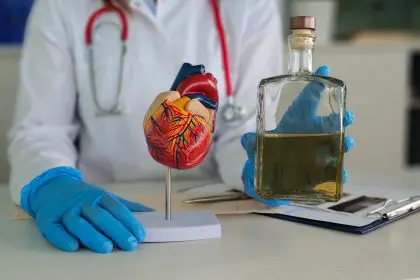Gastrointestinal cancer represents a complex group of diseases that affect the digestive system, claiming hundreds of thousands of lives globally each year. These malignancies can develop anywhere along the digestive tract, from the esophagus to the rectum, as well as in accessory organs like the pancreas, liver, and gallbladder. Despite their prevalence and deadly nature, many people remain unaware of the warning signs, risk factors, and screening options that could potentially save lives.
The spectrum of gastrointestinal cancers
Gastrointestinal (GI) cancers encompass a diverse range of malignancies, each with unique characteristics and challenges. Understanding the different types is crucial for recognizing potential symptoms and seeking appropriate medical attention.
Esophageal cancer affects the tube connecting the throat to the stomach. This cancer typically develops slowly over many years, often beginning with changes to the cells lining the esophagus. Two main types exist: squamous cell carcinoma, which is more common globally and associated with smoking and alcohol consumption, and adenocarcinoma, which has been increasing in Western countries and is linked to chronic acid reflux and Barrett’s esophagus.
Stomach cancer, also called gastric cancer, was once among the most common cancers in the United States but has declined significantly over recent decades. However, it remains prevalent in many parts of Asia, Eastern Europe, and South America. This decline in Western countries is often attributed to changes in food preservation methods, decreased consumption of heavily salted and smoked foods, and the recognition and treatment of Helicobacter pylori infections.
Colorectal cancer includes cancers of the colon and rectum and represents one of the most common and preventable forms of gastrointestinal cancer. The disease typically begins as small, noncancerous growths called polyps that form on the inner lining of the colon or rectum. Over time, some of these polyps can become cancerous. Regular screening can detect and remove polyps before they develop into cancer, making colorectal cancer one of the most preventable forms of cancer when caught early.
Pancreatic cancer is particularly aggressive and difficult to treat. The pancreas sits deep in the abdomen behind the stomach, making early tumors hard to detect during routine examinations. This cancer often spreads rapidly and is resistant to many treatments, contributing to its high mortality rate. Most cases are diagnosed at advanced stages when the cancer has already spread beyond the pancreas.
Liver cancer can develop primarily in the liver or spread there from other parts of the body. Primary liver cancer, also known as hepatocellular carcinoma, is often associated with chronic liver disease, particularly cirrhosis resulting from hepatitis B or C infections or long-term alcohol abuse. Secondary liver cancer, which starts elsewhere and spreads to the liver, is more common in the United States and Western countries.
Gallbladder and bile duct cancers are relatively rare but challenging to detect early. The gallbladder stores bile produced by the liver, while bile ducts carry this digestive fluid from the liver to the small intestine. Gallstones and chronic inflammation increase the risk of developing these cancers, which often present with vague symptoms that mimic other digestive disorders.
Warning signs that should never be ignored
Gastrointestinal cancers often develop silently, with symptoms appearing only after the disease has progressed. However, certain warning signs warrant immediate medical attention, particularly if they persist or worsen over time.
Persistent abdominal pain or discomfort that lasts for more than two weeks could indicate several gastrointestinal cancers. The nature and location of the pain may provide clues about which part of the digestive system is affected. Upper abdominal pain might suggest stomach or pancreatic issues, while lower abdominal pain could indicate colorectal problems.
Changes in bowel habits represent another critical warning sign. This includes persistent diarrhea or constipation, narrowing of the stool, or a feeling that the bowel doesn’t empty completely. These symptoms are particularly concerning when they represent a change from normal patterns and last for more than a few weeks.
Unexplained weight loss often signals a serious underlying condition, including various types of gastrointestinal cancer. Losing 10 pounds or more without trying might occur because the cancer consumes extra energy, interferes with how the body uses nutrients from food, or causes appetite loss.
Difficulty swallowing, known medically as dysphagia, can be a sign of esophageal cancer. This symptom typically begins with a feeling of food getting stuck in the throat or chest and may gradually worsen to include pain while swallowing. Some people might switch to softer foods or liquids to compensate for this difficulty.
Jaundice, characterized by yellowing of the skin and eyes, can indicate liver, gallbladder, or pancreatic cancer that is blocking the bile ducts. This symptom occurs when bilirubin, a yellow pigment produced during the normal breakdown of red blood cells, builds up in the blood and tissues.
Blood in the stool or rectal bleeding may appear as bright red blood or make stools look dark and tarry. While hemorrhoids and other benign conditions commonly cause rectal bleeding, this symptom should always be evaluated by a healthcare provider, especially in people over 50 or those with a family history of colorectal cancer.
Nausea and vomiting that persist despite treatment with over-the-counter medications could indicate an obstruction in the digestive tract caused by a tumor. When vomiting occurs shortly after eating, it may suggest an issue in the upper digestive tract.
Risk factors you can control
While some risk factors for gastrointestinal cancers cannot be changed, many lifestyle factors are within our control, offering opportunities for prevention.
Diet plays a significant role in gastrointestinal cancer risk. Diets high in processed meats, red meats, and low in fruits and vegetables have been associated with increased risk of colorectal and stomach cancers. Conversely, diets rich in fiber, fruits, vegetables, and whole grains appear to offer some protection against these cancers.
Maintaining a healthy weight reduces the risk of several gastrointestinal cancers. Obesity has been linked to increased risk of colorectal, pancreatic, liver, and esophageal adenocarcinoma. Fat tissue produces hormones and growth factors that can influence how cells grow and divide, potentially contributing to cancer development.
Tobacco use significantly increases the risk of nearly all gastrointestinal cancers. Cigarette smoke contains numerous carcinogens that can damage DNA and lead to cancer. The risk decreases gradually after quitting, making smoking cessation beneficial at any age.
Alcohol consumption, particularly heavy drinking, raises the risk of esophageal, liver, colorectal, and stomach cancers. The risk increases with the amount of alcohol consumed, and the combination of heavy drinking and smoking creates an especially high risk for certain cancers, particularly those of the upper digestive tract.
Chronic acid reflux, if left untreated, can lead to Barrett’s esophagus, a condition that increases the risk of esophageal adenocarcinoma. Managing reflux through lifestyle changes, weight loss, and medication when necessary may help reduce this risk.
Regular physical activity appears to protect against several gastrointestinal cancers, particularly colorectal cancer. Exercise helps maintain a healthy weight, reduces inflammation, improves immune function, and speeds the passage of food through the digestive tract, reducing exposure to potential carcinogens.
Screening and early detection save lives
For many gastrointestinal cancers, early detection significantly improves treatment outcomes and survival rates. Various screening methods exist for different types of gastrointestinal cancers, with some recommended for the general population and others reserved for high-risk individuals.
Colorectal cancer screening has proven highly effective at reducing both incidence and mortality. Current guidelines recommend regular screening beginning at age 45 for people at average risk, with several options available including colonoscopy, flexible sigmoidoscopy, stool-based tests, and CT colonography. During a colonoscopy, precancerous polyps can be removed before they develop into cancer, making this not only a screening test but also a preventive measure.
Endoscopic procedures allow direct visualization of the upper gastrointestinal tract (esophagus, stomach, and duodenum) or lower gastrointestinal tract (colon and rectum). These procedures can detect abnormalities that might not be visible on imaging studies and allow for biopsy of suspicious areas.
Imaging studies including CT scans, MRIs, and ultrasounds play important roles in detecting various gastrointestinal cancers, particularly those affecting organs that cannot be directly visualized with endoscopic procedures, such as the pancreas and liver. These tests are typically used when symptoms suggest a possible cancer rather than for routine screening.
Blood tests measuring tumor markers can sometimes help detect certain gastrointestinal cancers or monitor for recurrence after treatment. However, these tests generally lack the sensitivity and specificity needed for effective screening of the general population and are most useful when combined with other diagnostic methods.
Genetic testing may be recommended for individuals with strong family histories of gastrointestinal cancers or known genetic syndromes that increase cancer risk. Identifying genetic mutations can help determine appropriate screening strategies and may inform family members about their own risk.
Advances in treatment offer new hope
The treatment landscape for gastrointestinal cancers continues to evolve, with new approaches offering improved outcomes and quality of life for many patients.
Surgical techniques have advanced significantly, with minimally invasive approaches like laparoscopic and robotic surgery now common for many gastrointestinal cancers. These techniques typically result in less pain, shorter hospital stays, and faster recovery compared to traditional open surgery.
Targeted therapies attack specific molecules involved in tumor growth and progression. Unlike conventional chemotherapy, which affects all rapidly dividing cells, targeted therapies focus on cancer-specific changes, potentially resulting in fewer side effects. Examples include drugs targeting specific growth factor receptors or proteins involved in angiogenesis (the formation of new blood vessels that feed tumors).
Immunotherapy harnesses the power of the immune system to fight cancer. Checkpoint inhibitors, a type of immunotherapy, have shown promise in treating certain gastrointestinal cancers, particularly those with specific genetic features. These drugs work by removing the brakes that cancer cells place on the immune system, allowing immune cells to recognize and attack the cancer.
Precision medicine approaches tailor treatment to the specific genetic characteristics of an individual’s tumor. Genetic profiling of tumors can identify mutations that may respond to specific targeted therapies, allowing for more personalized treatment plans.
Multimodal treatment approaches combine different treatment modalities such as surgery, radiation, and chemotherapy to improve outcomes. The specific combination and timing of these treatments depend on the type and stage of cancer, as well as individual patient factors.
Palliative care focuses on improving quality of life for patients with advanced disease by managing symptoms and providing psychological, social, and spiritual support. This approach can be integrated with curative treatment or may become the primary focus when curative options are no longer available.
Living with gastrointestinal cancer
A diagnosis of gastrointestinal cancer affects not only physical health but emotional and social wellbeing as well. Comprehensive care addresses all these aspects to support patients through their cancer journey.
Nutritional support becomes particularly important for patients with gastrointestinal cancers, as both the disease and its treatments can affect appetite, digestion, and absorption of nutrients. Registered dietitians with expertise in oncology can help patients maintain adequate nutrition despite these challenges.
Managing treatment side effects requires a proactive approach. Common side effects of gastrointestinal cancer treatments include nausea, diarrhea, fatigue, and neuropathy. Medications and supportive care strategies can help minimize these effects and improve quality of life during treatment.
Emotional support plays a crucial role in cancer care. Depression and anxiety are common among cancer patients, and addressing these psychological aspects is essential for overall wellbeing. Support groups, counseling, and sometimes medication may help patients cope with the emotional impact of their diagnosis and treatment.
Long-term survivorship issues require ongoing attention even after treatment ends. Survivors of gastrointestinal cancers may face challenges such as late effects of treatment, fear of recurrence, and adjusting to a “new normal.” Survivorship care plans help address these issues and ensure appropriate follow-up care.
Understanding gastrointestinal cancers empowers individuals to recognize potential warning signs, reduce modifiable risk factors, and participate in appropriate screening. While these cancers present significant challenges, advances in prevention, early detection, and treatment continue to improve outcomes for many patients. With comprehensive care addressing both physical and emotional needs, people with gastrointestinal cancers can maintain the best possible quality of life throughout their cancer journey.
















